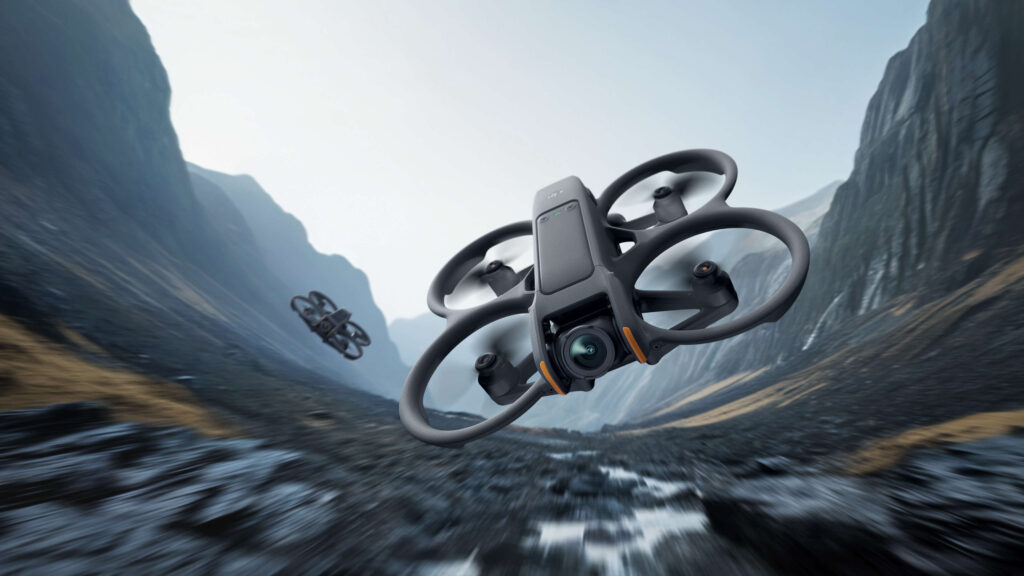DJI has released an evolution to its first-person-view Avata drone, the Avata 2, offering buyers a lighter, more compact, and nimbler flight experience with all the niceties that they've developed in goggles and controls.

The Avata 2 will be their first FPV drone since 2022, when the Avata first launched. Now, the 2nd model builds on its popularity and ecosystem with a smaller, sleeker update to the popular model. From the outset, the Avata 2 looks every bit the part of a successor, doing away with the trapezoidal structures of the original for a more blended, aerodynamic, and slimmer look. DJI doubled down on the optics, too, designed to make the most of their 3rd-gen goggles and RC motion 3. In first person view with DJI's goggles, operators can engage the picture-in-picture mode to stay aware of their surroundings. The control sticks have similarly been simplifed and pared down to the RC Motion 3, a single-stick grip that does away with the older 2-handed controller of yore. Pre-programmed flight maneuvers are included under DJI's 'Easy Acro 2' suite, providing one-touch flight actions like a 360° front/back flip, Roll 360°, and a yaw spin 180° with single-handed ease. For those who prefer to remain totally manual, the Avata 2 can be operated by DJI's more traditional two-handed controllers, too. Another nifty little trick is 'turtle mode', an automated righting of the drone should it fall onto the ground inverted.
The Avata 2 builds on the DJI collection with a super-wide 155-degree field of view for its 4K resolution main cam, backed by a 1/1.3-inch, 12-megapixel CMOS sensor. That wide FOV is designed in tandem with DJI's stabilization tech, allowing for footage that combines quick, fast-paced, dynamic transitions between close-ups without feeling jittery and nervous. The extra FOV can be cropped out shoudl operators prefer a more traditional view, or if they want to use DJI's 'RockSteady' and 'HorizonSteady' stabilization tools.
Like any high-speed, active drone with a small footprint, battery power suffers. THe Avata 2 boasts a max endurance of 23 minutes. It supports Power Delivery fast charging protocol, so recharging won't take nearly as long as early DJI models, but it's a good addition to any Avata 2 purchase to snag a few extra batteries should the mission require it. A new battery hub even allows multiple batteries to share and transfer their remaining charge to a single unit, effectively evening out a "spare" battery once fractions of each battery's full charge are combined. DJI included some small updates to all the other aspects of networking, storage, and transmission too, bumping it to 60 mbps of transmission capacity, 46 gigabytes of internal storage, and a 5-meter range to share the operator's video feed.
FMI: www.dji.com






































